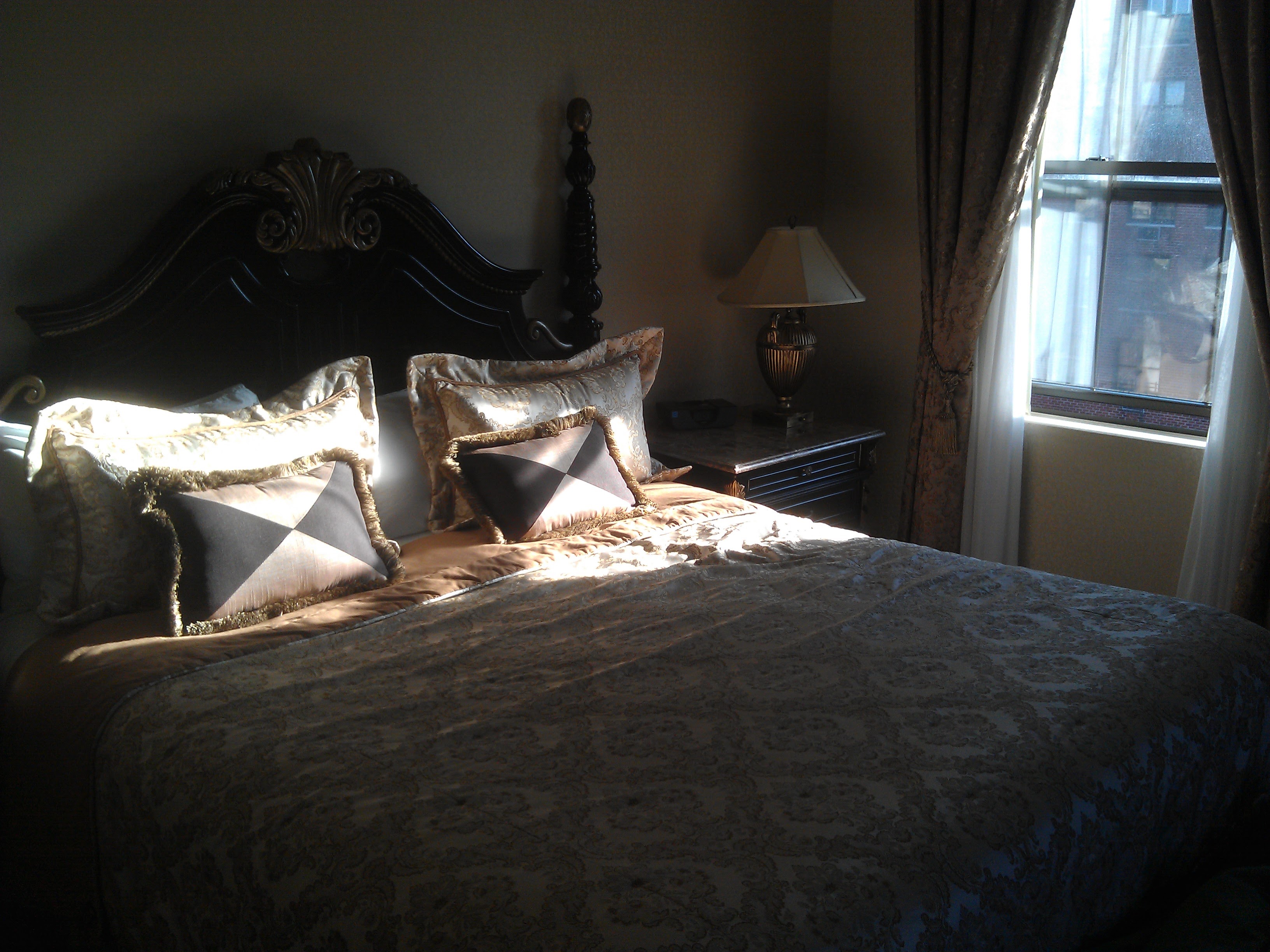Philip Roth: A Personal History

Guest room in the Lucerne Hotel, 79th and Amsterdam, NYC, November 2013
In November 2013, my wife and I made a weekend trip to New York City to see an opera at the Met. On the train ride from 30th Street Station on Saturday morning, I finished Roth Unbound, Claudia Roth Pierpont’s recently published biography of Philip Roth—at that time, the only substantial biography of Roth—and I had encountered an interesting passage that described an apartment on West 79th Street that Roth used as a writing studio. When we visited New York, we often ended up staying around 79th St. to be close to Zabar’s, where my wife likes to load up on heavy jars of jam, which I lug back to Philadelphia in my backpack. Outside Zabar’s there’s always a used-book dealer with several six-foot folding tables, and one is set up with Philip Roth’s books, advertised as “autographed.” When I first saw this display, I thought, Those can’t be signed, and if they are, I’m sure it’s a fake. After I read in the biography that he had an apartment on 79th, I began to have doubts about my own doubts. I imagined that he had made friends with the street vendor during his walks around the neighborhood and signed them as a favor. This hunch was later confirmed in Lisa Halliday’s Assymetry (2018).
When we arrived in New York, we checked into the Lucerne Hotel, on 79th Street, and were given a large suite on the top floor, thanks to a bit of one-upmanship between the check-in clerks. (“Well, you gave that other couple my room, so I’m giving this couple this one. Take that!”) Once we were in the room, I looked out each window to see the view, and my eyes fell on a glass-walled room on the back of the top floor of a building a few doors down from us. Against the glass walls were open shelves filled with books. It wasn’t possible to see into the room for all the books. I imagined that I was looking at the back of Roth’s writing studio. I got out my binoculars (I’d brought them for the opera) and tried to make out book titles, but I was looking at the backs of the books. Still, I found myself thinking that we were a few doors down from Philip Roth—who, I reminded myself, was probably in his home in Connecticut—the one portrayed under various guises in his fiction. The possibility kept running through my mind throughout the weekend, though.
We went to to see and hear Richard Strauss’s Frau ohne Schatten at the Met that night. We saw Jeremy Denk talking to a friend a few feet away from us as we entered. The next morning, we walked across Central Park to the Frick Museum to see an exhibit of Dutch paintings. Around midafternoon, we made our way back west across Central Park to prepare for the train ride home. As we walked west on 79th Street toward the hotel, my wife turned to me and said, “Isn’t that the author you like so much?” I looked up, and walking toward us, holding a cane, with two people to his left and one to his right—all chattering away—was Philip Roth. As we approached, he must have noticed we were gawking. (At least I was.) He looked over and said “Hi” as we passed.
~my wife thought it was wonderful that we’d seen Philip Roth and that he’d said hi to us—and it was, but it was a different experience for her than it was for me. Because I’d been imagining all along that we were in a hotel next to his writing studio, I wasn’t surprised when we ran into him, and although my wife later told people that Philip Roth said hi to us, she either didn’t notice—or graciously overlooked—that when he said hi, he wasn’t looking at us, he was looking at her. But what else would you expect.
Postscript: After Roth’s death, I learned that his condo on 79th Street was farther east, closer to Central Park. When it went up for sale, there were several articles about it, and through a simple Google search, I found the exact address, 130 West 79th Street, Apts. 12A and 12F, on a realty site.